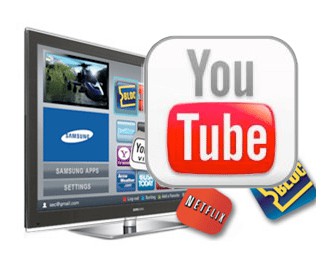
YouTube’s fortunes in the emerging internet TV space may be hampered because it cannot yet help partners monetize their content on the new platform.
YouTube (NSDQ: GOOG) now has an app on several connected TVs from manufacturers like Samsung and LG (SEO: 066570), but some owners grumble that it does not include videos found on the website, like official music videos.
That means Vevo. The label-owned music video wholesaler syndicates to YouTube on the web but is absent from YouTube’s connected TV apps. All the while, though it is traditionally somewhat anonymous on youtube.com, Vevo is building up its own consumer-facing brand identity and is rolling out on to internet TV platforms.
Vevo tells paidContent: “Vevo and YouTube’s partnership has certain minimum requirements for our videos to be made available on their applications. Vevo’s branding must be made available and we must be able to monetize on our content.
“At this time, YouTube’s Samsung app does not meet these requirements. If, at any time, changes are made to YouTube’s app to accommodate these requirements, we will be happy to make Vevo videos available. Vevo is available on YouTube’s web platform and on their Android mobile app.”
Other requirements of some YouTube partners include back-end reporting and particular advertising capabilities – not yet available through YouTube on connected TV.
“Though we can’t comment on specific partners, we’re actively adding features and are quickly moving towards all content being available on all devices,” YouTube owner Google tells paidContent.
After years of experimentation and unprofitability, YouTube last year increased the prevalence of ads on its web-hosted videos. If that gives it a solid web revenue platform, then the move of internet video from desktop to connected TV could, in future, make YouTube highly successful as a living room internet video advertising operator.
Today, however, YouTube’s big connected TV odyssey is patchy because it lacks some premium content partners like Vevo. We are not sure how far the patches go, but others are likely missing, too.
Still, the connected TV market, though it is set to start taking off in 2012, is still young. YouTube has been here before, with mobile. After earlier grumbles about similar non-availability, Google last year implemented advertising support for YouTube’s Android client, encouraging more premium content partners to flag their videos for mobile distribution.
Vevo is currently available on Boxee, games consoles and Google TV, the latter of which does carry Vevo videos with advertising.